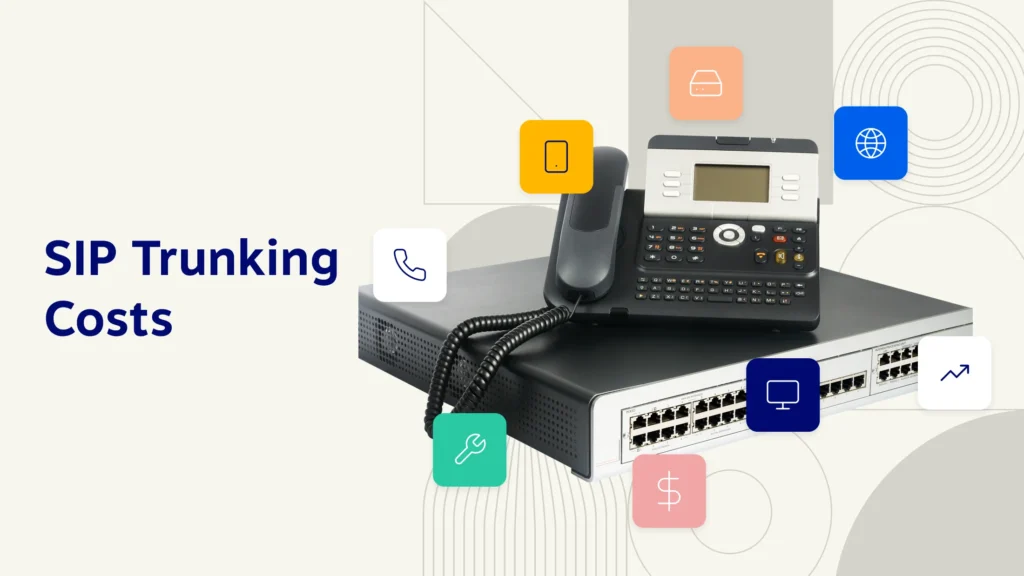Klassische Telefonsysteme wurden nie für hybride Arbeitsmodelle oder globale Zusammenarbeit entwickelt.
Sie verbinden zwar weiterhin Gespräche, bremsen jedoch das Wachstum, erhöhen die Kosten und schränken die Transparenz ein.
Deshalb setzen immer mehr Unternehmen auf SIP Trunking – ein cloudbasiertes Kommunikationsmodell, das physische Leitungen durch virtuelle Verbindungen ersetzt und so Kontrolle, Effizienz und Kundenerlebnis in allen Unternehmensbereichen verbessert.
Wie SIP-Trunking in moderner Infrastruktur funktioniert
SIP (Session Initiation Protocol) ermöglicht die Sprachübertragung über das Internet anstelle klassischer Kupferleitungen.
Jeder SIP-Trunk fungiert als virtueller Kanal, der Ihre PBX-Anlage über sichere, verschlüsselte IP-Verbindungen mit dem öffentlichen Telefonnetz (PSTN) verbindet.
Anrufe werden als digitale Datenpakete übertragen, was geringe Latenzzeiten und eine stabile HD-Audioqualität gewährleistet.
Bestehende PBX-Systeme wie Cisco, 3CX oder Asterisk lassen sich direkt in SIP-Trunks integrieren – so können Unternehmen ihre Kommunikationsinfrastruktur modernisieren, ohne komplette Hardware-Austausche.
Geschäftlicher Mehrwert: Kosteneffizienz, Kontrolle und Kontinuität
Die Umstellung auf SIP ist nicht nur ein technisches Upgrade, sondern auch eine finanzielle und operative Optimierung.
- Geringere Gesamtkosten. SIP-Trunking reduziert feste Telefoniekosten um bis zu 50 % und beseitigt den Wartungsaufwand vor Ort.
- Betriebliche Agilität. Neue Leitungen oder Standorte lassen sich in Minuten statt Wochen aktivieren.
- Servicekontinuität. Cloud-Redundanz und automatisches Failover gewährleisten unterbrechungsfreie Kommunikation.
- Vereinheitlichte Infrastruktur. Ein zentrales System verbindet alle Niederlassungen und Remote-Teams weltweit.
- Besseres Kundenerlebnis. Schnellere Weiterleitung und stabile Sprachqualität verbessern die Serviceleistung und erhöhen den NPS.
Ein europäisches Logistikunternehmen reduzierte nach der Umstellung auf SIP seine monatlichen Gesprächskosten um 42 % und verkürzte die Reaktionszeiten um 20 % innerhalb des ersten Quartals.
Integration mit Geschäftstools und Cloud-Systemen
SIP-Trunking lässt sich nahtlos mit gehosteten PBX-, VoIP- und Kollaborationsplattformen wie Microsoft Teams oder Zoom Phone verbinden.
Zudem integriert es sich mit CRM- und Callcenter-Software und schafft so ein einheitliches Ökosystem, in dem jeder Anruf protokolliert, nachverfolgt und analysiert wird.
Über offene APIs und SIP-Konfigurationen kann es auch mit individuell entwickelten CRM-Systemen oder Drittanbieter-Anwendungen verbunden werden, was maximale Flexibilität für jede Infrastruktur bietet.
Der gesamte Datenverkehr läuft über SBC-Gateways mit TLS- und SRTP-Verschlüsselung, um Compliance, Datenschutz und Zuverlässigkeit auf Enterprise-Niveau zu gewährleisten.
Diese Integration ermöglicht es Unternehmen, Sprachkommunikation als Teil ihrer digitalen Transformationsstrategie einzusetzen.
Skalierbarkeit, die Unternehmenswachstum unterstützt
Wenn Teams wachsen und Märkte sich verändern, muss Kommunikation ohne Komplexität skalieren.
Mit SIP lässt sich die Kapazität sofort anpassen – neue Kanäle, Regionen oder Agenten können über ein Online-Dashboard hinzugefügt werden, ganz ohne Hardware oder Ausfallzeiten.
Diese Skalierbarkeit ermöglicht es Organisationen, agil und kosteneffizient zu bleiben – selbst bei hoher Nachfrage oder schneller Expansion.
Branchenübergreifender Nutzen und Anwendungsfälle
SIP-Trunking bietet messbaren Mehrwert in zahlreichen Branchen:
- Kundendienst: Hohe Anrufvolumina über ein einheitliches Netzwerk verwalten.
- Finanz- und Versicherungswesen: Sichere und gesetzeskonforme Kommunikation mit Kunden.
- Gesundheitswesen: Kliniken und Spezialisten über verschlüsselte Kanäle verbinden.
- Einzelhandel und E-Commerce: Saisonale Spitzen ohne Serviceunterbrechungen bewältigen.
- Unternehmensnetzwerke: Kommunikation über globale Standorte hinweg konsolidieren.
Ein Beispiel: KazCall (Kasachstan) implementierte SIP-Trunking für internationale Gespräche und erzielte dadurch bis zu 38 % niedrigere Kommunikationskosten sowie 43 % bessere Gesprächsqualität in seinen regionalen Niederlassungen.
In jeder Branche bildet SIP-Trunking die Grundlage für zuverlässige, skalierbare und datengesteuerte Kommunikation.
Zukunftssichere Telefonie mit DID Global
SIP-Trunking ist heute das Rückgrat moderner Unternehmenskommunikation.
Es reduziert Kosten, stärkt Ausfallsicherheit und ermöglicht es Unternehmen, global zu skalieren – ohne technische Hürden.
Bei DID Global unterstützen wir Organisationen dabei, ihre Telefonie mit sicheren, hochwertigen SIP-Trunk-Lösungen zu modernisieren, die auf messbare Geschäftsergebnisse ausgerichtet sind – von betriebseffizienter Kommunikation bis hin zu verbessertem Kundenerlebnis.
Quelle: DID Global





